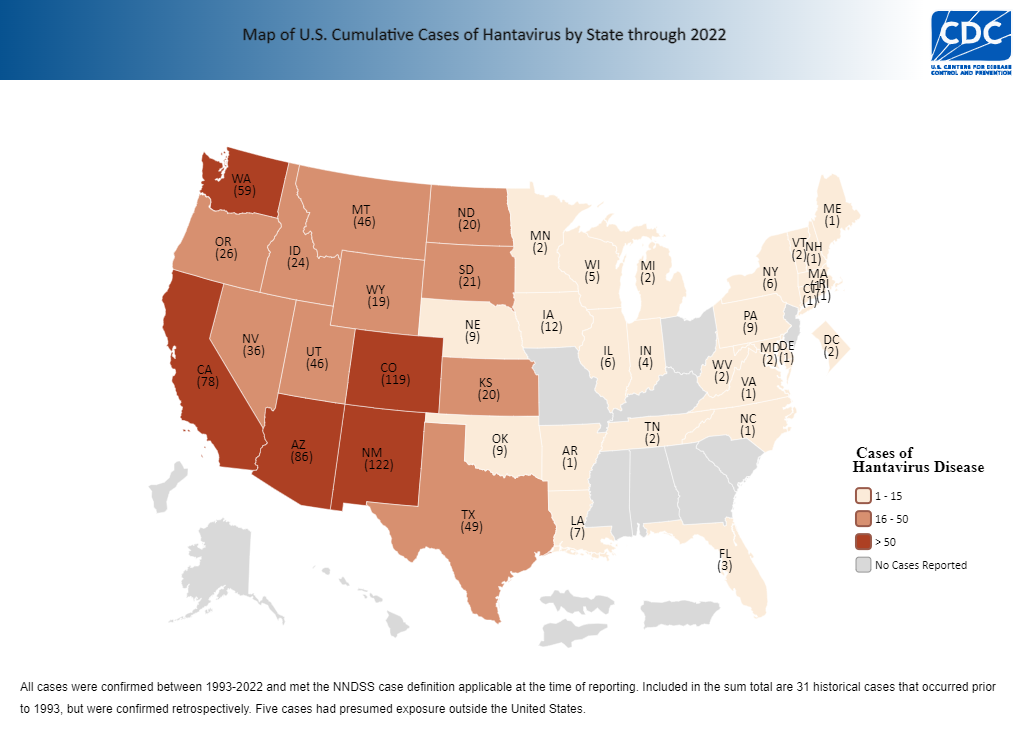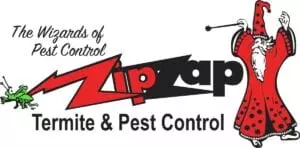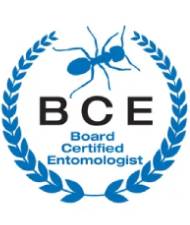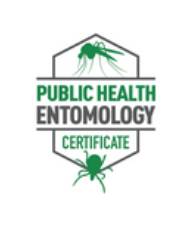Hantavirus and Deer Mice in the United States

Hantavirus and Deer Mice Awareness: Unmasking the Silent Invaders
Hantavirus and Deer mice can be a dangerous pairing. The awareness of these two is crucial. The pitter-patter of tiny feet at night and the unsettling discovery of gnawed food packaging are not just nuisances; they’re red flags signaling a potential rodent infestation. In certain regions, they carry the shadow of a serious health threat: hantavirus. Understanding the signs, risks, and proper response is crucial for safeguarding your home and family.
Decoding the Signs of Hantavirus and Deer Mice: Recognizing Rodent Presence
Forget the cartoonish image of mice nibbling cheese. In reality, rodent infestations leave behind a trail of unsettling clues. Look for:
- Evidence of fecal matter, particularly in secluded spaces: This points to active rodent traffic.
- Chewing damage on structural materials or stored goods: This signals rodent activity.
- Nocturnal auditory disturbances within wall cavities or overhead: This suggests rodent movement.
- Accumulations of shredded fibrous materials: These indicate nesting sites and should be treated with extreme caution.
Safe Sanitation: A Matter of Health
If you discover evidence of rodents, proceed with extreme caution. Traditional cleaning methods can be dangerous.
- Dry cleaning methods risk aerosolizing dangerous pathogens; avoid them entirely. Don’t sweep or vacuum droppings.
- Saturate contaminated zones with a potent disinfectant solution before any physical removal. A bleach-based solution is recommended.
- Complete personal protective equipment, including respiratory and hand protection, is mandatory during cleanup. Wear gloves and an N95 mask.
- Prompt medical evaluation is critical for anyone experiencing symptoms following potential exposure.
The Silent Arrival: Incubation and Initial Symptoms
After exposure to hantavirus, typically through inhaling aerosolized rodent droppings or urine, the virus enters a period of incubation. This phase usually lasts between one and five weeks, although it varies. You might feel perfectly healthy during this time, unaware of the lurking threat.
The initial symptoms of hantavirus often mimic the flu, making it easy to dismiss them as a common cold or other viral infection. Keep an eye out for:
- Fatigue: An overwhelming sense of tiredness that doesn’t improve with rest.
- Fever: A noticeable increase in body temperature.
- Muscle aches: Pain and stiffness, particularly in the thighs, hips, back, and sometimes shoulders.
- Headaches: Persistent or recurring head pain.
- Dizziness: Feeling lightheaded or unsteady.
- Chills: Shivering and feeling cold, even in warm environments.
- Abdominal complaints: Nausea, vomiting, diarrhea, and abdominal pain.
These early symptoms can be deceptive as they are common to many illnesses. However, these symptoms should raise a red flag if you’ve recently been in an area where rodents are present, especially if you’ve been cleaning out dusty sheds or cabins.
The Progression: Hantavirus Pulmonary Syndrome (HPS)
Hantavirus can progress to a severe and potentially fatal respiratory illness called Hantavirus Pulmonary Syndrome (HPS) within four to ten days after the initial phase. This is when the real danger arises. The late-stage symptoms include:
- Coughing: A persistent and often dry cough.
- Shortness of breath: Difficulty breathing, feeling like you can’t get enough air.
- Rapid breathing: Breathing faster than usual.
- Chest tightness: A feeling of pressure or constriction in the chest.
- Respiratory distress and failure: In severe cases, the lungs can fill with fluid, leading to life-threatening respiratory failure.
The rapid progression from flu-like symptoms to severe respiratory distress makes hantavirus dangerous. If you experience these late-stage symptoms, especially after potential rodent exposure, immediate medical attention is critical.
Why Prompt Medical Attention Matters
There is no cure or specific treatment for hantavirus. Medical care focuses on supportive measures, such as providing oxygen and managing respiratory distress. Early diagnosis and treatment is crucial for chance of survival.
Because the mortality rate for HPS is high, recognizing the symptoms and seeking help quickly is vital. Don’t hesitate to seek medical attention if you suspect you’ve been exposed to hantavirus and are experiencing any of these symptoms.
Key Takeaways:
- Hantavirus symptoms can initially mimic the flu.
- Progression to HPS involves severe respiratory distress.
- Early medical intervention is crucial for survival.
- If you suspect exposure, don’t delay seeking help.
The Indispensable Role of Professionals
DIY rodent control, especially in areas prone to hantavirus, is a gamble you shouldn’t take.
- The strategic removal of rodent populations requires specialized knowledge and tools to minimize health risks.
- Comprehensive structural analysis to locate and fortify potential access points is essential for long-term control.
- A tailored, preventative approach designed by experts is the only lasting solution.
- Professional expertise is non-negotiable.
Hantavirus and Deer Mice: Knowledge is Protection
The deer mouse, particularly prevalent in the western and central U.S., is the primary vector for hantavirus transmission.
- Geographical hotspots exhibit heightened hantavirus prevalence in the western and central regions.
- Deer mice prefer their own habitats but will invade human dwellings, seeking food and shelter.
- Increased hantavirus risk during spring and summer cleaning activities.
Preventative Measures: Fortifying Your Fortress
Proactive steps can significantly reduce the risk of rodent infestation:
- Elevate stored items to eliminate potential rodent harborage zones.
- Minimize materials suitable for nesting to deter rodent habitation.
- Implement a secure barrier system, sealing all potential entry points, to prevent rodent ingress.
- Food storage must be impenetrable, utilizing rodent-proof containers with secure closures.
- Immediate sanitation practices are vital to eliminate food sources that attract rodents.
- Outdoor cooking spaces require stringent cleanliness to prevent attracting rodents.
- Eliminate all accessible food sources, including pet provisions and waste, by utilizing secure storage and removing overnight access.
- Relocate bird feeders and employ deterrents to minimize rodent attraction near structures.
- Garbage receptacles should be constructed of durable materials with sealed lids to prevent rodent access.
- Any rodent activity should require immediate professional assessment and intervention.
Where to Find More Information about Hantavirus and Deer Mice:

- Comprehensive rodent biology, prevention, and professional pest management resources are available at pestworld.org.
Understanding Hantavirus: A Serious Threat
Hantavirus represents a collection of viral pathogens with potentially severe systemic effects.
- HPS (Hantavirus Pulmonary syndrome) manifests as a critical respiratory illness, carrying a substantial risk of mortality.
- The majority of hantavirus infections are geographically concentrated west of the Mississippi River.
- HFRS (Hemorrhagic fever with renal syndrome) produces renal dysfunction, potentially necessitating renal replacement therapy.
- The transmission of hantavirus occurs via multiple pathways.
- Aerosolized viral particles, originating from rodent excreta, represent the primary transmission route.
- Contact with contaminated rodent materials poses a direct transmission risk.
- While less common, rodent bites can also serve as a transmission vector.
- Human-to-human transmission of hantavirus has not been documented.
- Preventative measures are paramount in the absence of a cure, vaccine, or targeted treatment.
- The incubation period for hantavirus ranges from one to five weeks post-exposure.
- Hantavirus infection may culminate in HPS, a life-threatening respiratory syndrome.
- Initial symptoms often resemble influenza, including fever, myalgia, and fatigue.
- Progression to HPS, characterized by respiratory distress, typically occurs within four to ten days of initial symptom onset.
- Hantavirus carries a significantly higher mortality rate than influenza, underscoring the severity of this infection.
- Prevention through rigorous sanitation and rodent exclusion remains the most effective defense against hantavirus infection.
- Rapid medical assessment is crucial for individuals exhibiting symptoms following suspected hantavirus exposure.
By staying informed and taking proactive measures, you can protect your home and family from the hidden dangers of Hantavirus and Deer Mice.

Jeffery Preece, BCE, PHE
Jeffery is the Owner/Technical Director of ZipZap Termite & Pest Control. A board-certified entomologist and public health entomology certificate holder.



